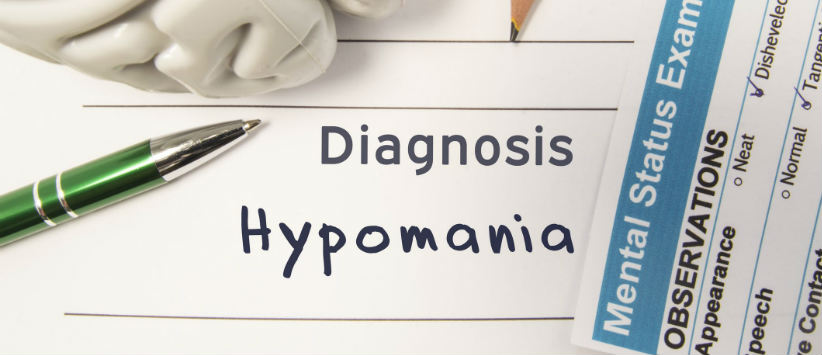'Transdiagnostic psychiatry': should we prescribe to treat specific emotions, rather than specific disorders?
07 March 2019
Patients and psychiatrists might arriving at effective medication faster through following a narrower structure that's based on 'symptom rather than syndrome', argues Adrian Pecotic. Could the same logic apply to reaching a talking therapy match more swiftly?
Diagnoses provided by psychiatrists have become more specific over time. Each edition and update of the Diagnostic and Statistical Manual (the DSM, one of the two recognised 'disorder manuals') introduces new disorders and splits canonical ones. The steady expansion of diagnostic categories has generated considerable controversy. Worries have been expressed about ‘multiplying disorders’ and concerns have been raised about the number of Personality Disorders. Despite these disagreements, the mental illnesses defined by the DSM continue to guide both research and the treatments offered to patients.
"The best scientific results often come from stripping away complexity, pruning unwieldy bodies of knowledge to reveal what’s important. This is especially true when science is in the service of people and society, as psychiatric science must be."
'Transdiagnostic psychiatry' responds to these problems with the idea that our theories and treatments of mental illness should reach across, or transverse, multiple disorders. David Barlow, a psychologist at Boston University, writes that the DSM "may be overemphasizing categories that are minor variations of a broader underlying syndrome” [1]. This suggests that placing a focus on the biological mechanisms and patterns of thought shared by many disorders is more productive than attempting to tailor drugs and therapies to each ‘minor variation.’ In other words, the similarities between conditions are more important than their differences. Without the fragmentation of studying and treating each disorder separately, a transdiagnostic approach could simplify and rationalise the vast body of psychiatric tools and knowledge.
DSM dissatisfaction
The break with psychiatric orthodoxy is stark, but in keeping with growing dissatisfaction with the DSM from some quarters. What motivates the fine distinctions between disorders is the expectation that a distinct etiology — an understanding of what causes a disorder and its typical progression — will be found for each. Once identified, what’s responsible for an illness can be targeted by medical means. But, if the transdiagnostic approach is on the right track and different mental illnesses share many causes, attempting to target unique etiological factors is misguided.
Many researchers are interested in improving talking therapies using transdiagnostic principles. Cognitive Behavioral Therapists sometimes use different methods (‘protocols,’ technically) for different diagnoses. If the symptoms of many disorders are caused by the same patterns of emotion and thought, the amount of different options a therapists may look to learn in order to impede them would be reduced.
Barlow and his colleagues have developed ‘Unified Treatment Protocol’ to treat several disorders using the same principles and handbook. Based on CBT, the Unified Protocol directs therapists and patients to modify “strong negative reactions to emotions,” which cause “problematic, avoidant coping across [all] emotional disorders” [1]. The therapy addresses the common factor, trouble processing emotions, in order to alleviate all of the distinct, maladaptive, coping strategies seen in different emotional disorders. Recently, UTP has achieved some support from experiments: a randomised clinical trial, conducted by Barlow’s group, was successful [2] and a review of several, by Peter McEvoy and others, concluded “unified treatments are associated with symptom improvement” [3].
Benefits for pharmacology and psychology
Other groups of scientists direct their research toward the biological processes underlying multiple disorders. Often, they focus on regions of the brain implicated in many different disorders, with the goal of developing medications for use in more than one disorder. For instance, the problems with emotion regulation, discussed above, might be tied to the same neurological mechanisms. Masud Hussain and Jonathan Roiser believe this to be the case for anhedonia (inability to feel pleasure) and apathy, two closely-related symptoms which feature in Major Depressive Disorder and Schizophrenia, among others. They argue that systems responsible for “decision making for rewards” are involved in the symptoms across all diagnostic categories [4]. This opens the possibility that “pharmacological and psychological” treatments could be designed to target these symptoms in particular, whichever pathology they appear in.
One can imagine all treatment decisions being made on this case-by-case, symptomological, basis. Instead of settling on a diagnosis and writing a prescription for one of the first-line drugs, psychiatrists choose drugs meant to accomplish a specific purpose. For example, a patient with depression who is experiencing anhedonia could receive the medications Husain and Roiser propose, but someone with a different set of symptoms would not. Such an approach would impose some structure on the vast pharmaceutical options on the table for each diagnosis. Hopefully, this would simplify the process of arriving at effective medication by tying it to more determinant factors.
- See also: "We should be looking at capacities (plural) in mental health detention decisions"
- See also: Join conversations about mental health disorders at Mental Health Today Wales in Cardiff on May 22
Talk therapy could see similar benefits from streamlining practices (indeed, rather more quickly, since the neuroscience is years from application). The volume of therapies and protocols imposes high costs and training demands on therapists, meaning the “dissemination of treatment to providers becomes an obstacle,” Barlow Allen and Choate put it [5]. Not every therapist can become competent in every form of therapy, which fractures the treatment hours available. There may be more demand for some specializations than those trained in it can accommodate, while therapists with other specializations have too few patients. Also, different types of therapy may not be equally available across geographic areas, forcing expense and travel on (mostly rural) patients. Widespread adoption of the Unified Protocol would consolidate therapeutic resources into a larger, more uniform, pool. Perhaps “facilitat[ing] more flexible treatment scheduling and shorter treatment waiting times for patients,” in McEvoy’s words [3].
We often picture science becoming more complex as it progresses, capable of describing everything in its field accurately and in exhaustive detail. From this perspective, transdiagnostic psychiatry’s drive towards simplifying the treatment of mental illness might strike some as a surrender. In fact, the best scientific results often come from stripping away complexity, pruning unwieldy bodies of knowledge to reveal what’s important. This is especially true when science is in the service of people and society, as psychiatric science must be. The transdiagnostic principle of relying on the similarities between mental rather than the differences could guide this effort. Tying pharmaceuticals to observable metrics and reducing the amount of specialized therapies are steps that depend on choosing the level of detail most useful for research and treatment. Much, though not all, of this research has a long way to go before it can be integrated into care; it remains to be seen whether it can live up to its promise. It does, at least, represent a potentially fruitful way of thinking about mental illness with implications extending from talk therapy to the pharmacy.
[2] https://jamanetwork.com/journals/jamapsychiatry/fullarticle/2646395
[3] http://ruby.fgcu.edu/courses/twimberley/10199/psy/transrx.pdf


Comments
Write a Comment
Comment Submitted